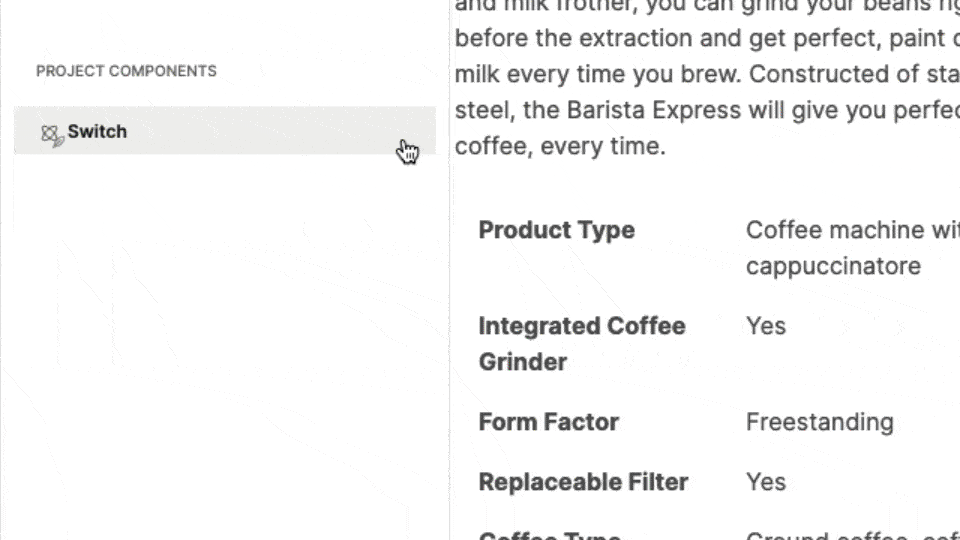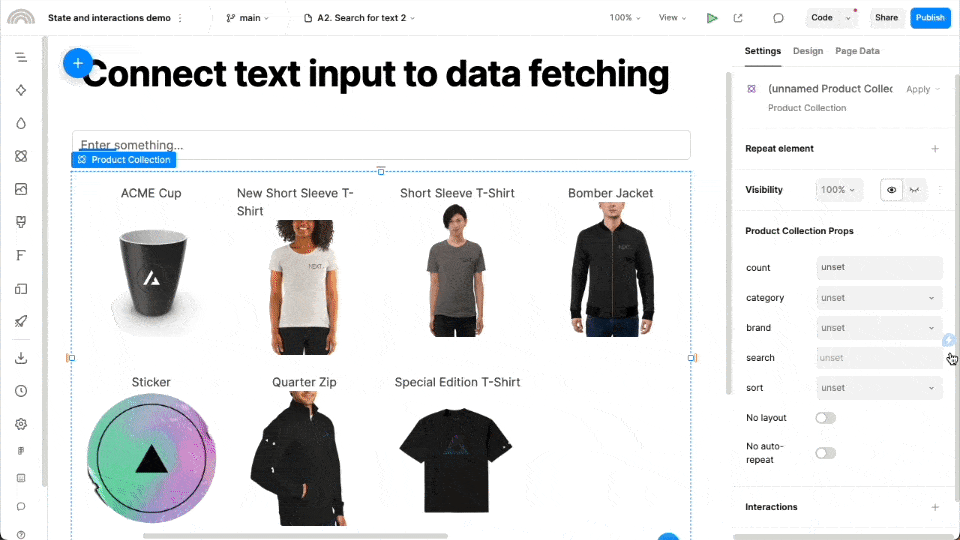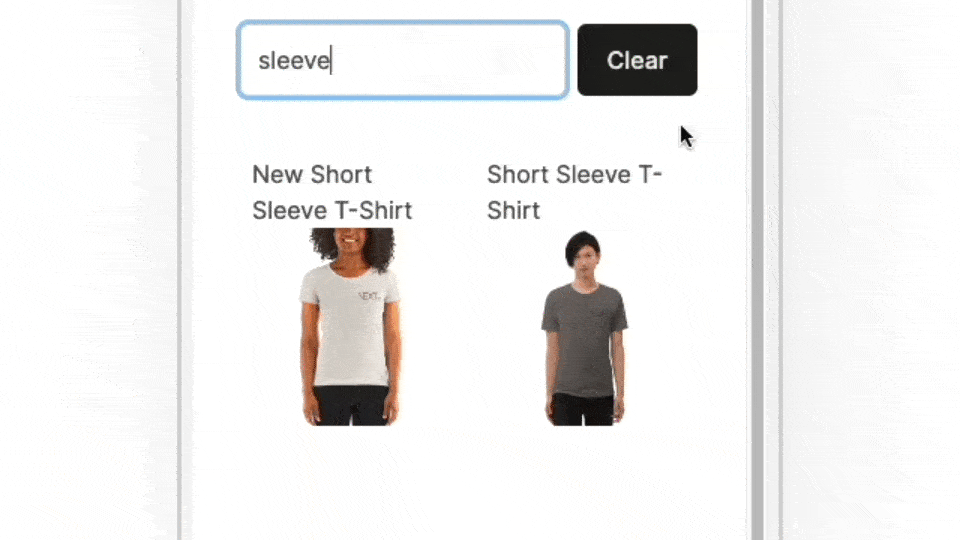Interactions and state
After many months in the oven, today we are thrilled to unveil Interactions, a foundational new capability in Plasmic.
Until now, Plasmic had largely been focused on creating static content and designs. If you wanted to add even simple interactivity—for example, making a menu appear when the user clicks a button—it required a developer to write code components. Even with the right code components, this approach could become complicated or unwieldy for more complex interactivity.
Today, with the launch of Interactions, you can truly bring your designs to life, right in Plasmic Studio—without coding. Whether it's landing pages with a sprinkling of interactivity, or full application-like experiences, you can build it.
How does it work? It all starts with state.
State
Interactive components—starting with basic ones like checkboxes and text inputs—have some state that changes as the user interacts with it—like whether the checkbox is checked, or what text is in the input. Plasmic now lets you access that state.
Insert a Switch:
Now, you can control another element’s visibility based on the state of that Switch:
That’s it! Now interact with it:
Let’s step it up with something a bit more interesting. Insert a text input:
Now, set the “search” prop of a Product Collection component to match the state of that text input.
And…there is no step 3!
You can create your own stateful components in addition to the ones we showed above.
Once you’ve introduced state, use Interactions to take it to the next level.
Interactions
Interactions enable you to trigger actions.
You can add a click interaction to clear the text input from earlier:
Et voila!
Interactions work seamlessly with other Plasmic features like variants.
For instance, make a button flip between different variants of your page:
And beyond
This foundation applies to a wide range of use cases, including small everyday features like switching gallery images on hover.
Or a calculator for your pricing page or purchase page:
But it scales to building complex apps. From public user portals and community forums:
To internal tools and admin dashboards:
And—as is always the case with Plasmic—you can tear down all the walls when integrating your own codebase.
Stay tuned for more updates and examples on the way. This is just the beginning of what’s on our roadmap for Interactions and enabling you to build rich interactive experiences. We can't wait to see what you create with this new capability— so share your thoughts and creations with us!













